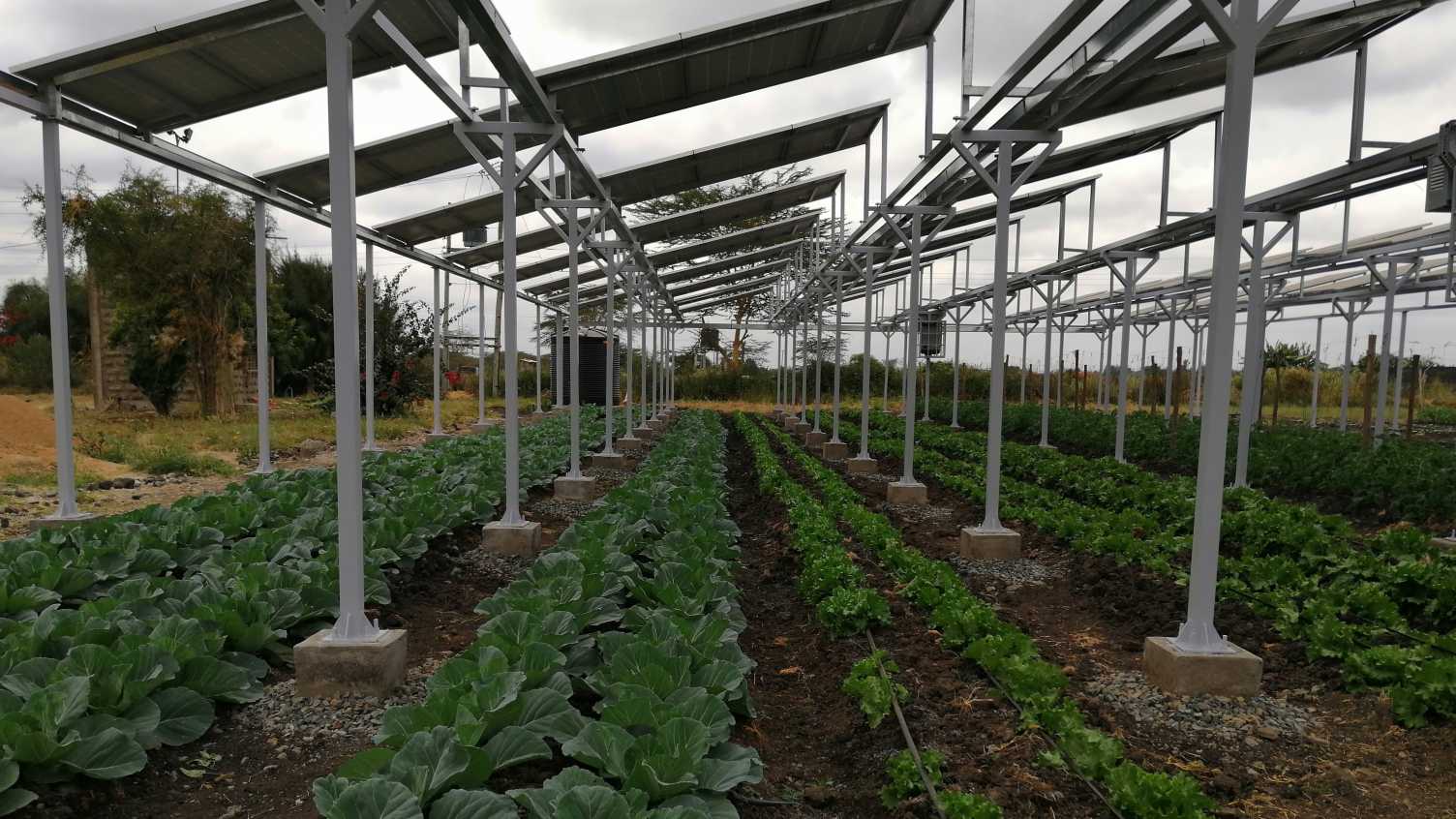
Innovative Project Is Growing Crops Beneath Solar Panels in Kenya

Scientists working in Kenya are trialing an innovative way to “harvest the sun twice.”
This means using a special solar panel technique known as agrivoltaics that installs solar panels both to generate clean energy and to shade crops. After a year of hopeful research, the University of Sheffield, World Agroforestry and the Kajiado-based Latia Agripreneurship are officially launching an agrivoltaics trial this week in open-field farms in Kenya’s Kajiado county, The Guardian reported Tuesday.
“We needed to build a test system to see if this technology will be suitable for the region,” Dr. Richard Randle-Boggis of the University of Sheffield told The Guardian.
The project, officially called “Harvesting the sun twice,” is designed to assess whether or not agrivoltaic systems could be successfully used in rural East Africa.
The project was first announced in November 2020 with £1.4 million in funds as part of UK Research and Innovation (UKRI) Global Challenges Research Fund (GCRF) Collective Program, as the University of Sheffield reported at the time. The idea was to help solve the region’s energy problems without putting too much pressure on valuable land space.
Seventy-three percent of East Africa’s population does not have access to electricity, according to the Stockholm Environmental Institute (SEI). Installing solar panels would seem like an environmentally-friendly solution to this problem, but it presents its own challenges.

“[T]he land use change required for these arrays typically involves clearing land to bare soil, eliminating several important ecosystem services e.g. soil stability and water retention, carbon sequestration, food provision, and habitat for biodiversity,” SEI wrote.
Enter agrivoltaics. By combining the land dedicated to solar panels with the land dedicated to agriculture, it is possible to avoid some of these pitfalls. Growing plants beneath elevated solar panels protects them from the sun in hot, dry places and helps the soil retain moisture, the University of Sheffield explained. The strategy has worked successfully in Global North countries like France, Germany and the U.S., but has not been tested in the Global South, according to SEI and The Guardian.
So far, the results have been promising, The Guardian reported. In Kajiado, cabbages cultivated under 180, 345-watt solar panels were a third larger and healthier than the control group. Eggplants, lettuce and corn also fared better in the panels’ shade.
“We wanted to see how crops would perform if grown under these panels,” Latia Agripreneurship Institute agronomist Judy Wairimu told The Guardian.
The initiative has made sure to work closely with East African solar developers and agribusiness companies, as well as local communities, political organizations and nonprofits.
“This exciting Programme brings together diverse expertise from across the globe, ensuring that the voices of those most impacted are empowered to drive sustainable solutions for those most in need,” UKRI International Champion Professor Andrew Thompson said when the project was first announced by the University of Sheffield.
In addition to finding a compromise between energy and agriculture land uses, the idea could also help rural communities to support themselves.
“Women here can spend up to 300 Kenyan shillings (£2) on a bodaboda (motorcycle taxi) fare to the market just to buy vegetables worth 100 Kenyan shillings,” Latia Agrepreneurship Institute head of training Anne Macharia told The Guardian.

 233k
233k  41k
41k  Subscribe
Subscribe 